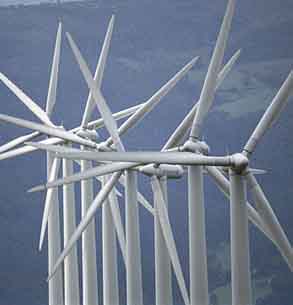 ONE BIOSPHERE
ONE BIOSPHERE 
| |
|
|||


OUR STORY
One Biosphere is an alliance of people and organizations who are united to preserve the quality of our global environment through our forum and publications, education, advocacy, research and communications among our members and partners.
ALTERNATIVE RENEWABLE ENERGY SOURCES

Renewable energy is energy generated from natural resources, including sunlight, wind, rain, tides and geothermal heat which are renewable. Renewable energy technologies include solar power, wind power, hydroelectricity ,biomass and biofuels.
In 2006, over 15% of global energy consumption originated from renewable sources, with the majority generated from traditional biomass such as wood-burning. Hydroelectricity is the next largest renewable source, providing 3%, then hot water heating. Modern technologies such as geothermal, wind, solar, and ocean energy together provided less than 1% of energy consumption. The theoretical potential for large scale usage is enormous, exceeding all other sources, including fossil fuels. The challenge is to make renewable energy sources a primary source of power.
The use of alternative energy sources in the U.S. is exploding due to concerns about global warming and skyrocketing fossil-fuel prices. For instance, the use of wind and solar power increased by 40% in 2007. The U.S. consumed over 600,000 barrels of ethanol a day during the summer of 2008 which is over 40% higher than in 2007. In terms of venture capital, private investment in the alternative energy sector was approximately $2.6 billion dollars in 2007.
Alternative energy is progressively breaking into the mainstream. However, there are various roadblocks. A multiplicity of projects are underway to study and solve these problems.
For example, solar companies are working on reducing the costs of solar energy. There have been dramatic decreases in the cost of solar energy. Advanced technologies contribute to the decreases in price. Also, the increasing number of solar energy users and manufacturing volumes have made solar systems more affordable. As more users realize the benefits of solar energy, solar energy cost will continue to decline.
As the market increases, more users will adopt affordable solar solutions. Because governments have recognized the benefits, financial incentives are available from state, federal and local governments as well as utility companies.
Wind power is intermittent and is a diffuse source which means low energy production and a large numbers of wind generators. Wind power requires large land masses, noise, and unsightly turbines present environmental drawbacks from the perspective of some environmentalists.
Alternative energy technologies suffer from some common problems. First, several sources are intermittent and unreliable. These are natural resources so the wind does not always blow, the sun does not always shine and waves do not always occur. This gives rise to the inherent problem of providing a constant power supply to energy users.
Nationally, this may be resolved by using revolving supplies so that conventional fossil fuel power stations running at low output may promptly be increased to full output to meet sudden demands when alternative sources are not available. For instance, an eco friendly method could be to use pumped hydro-electric power in which water stored behind a dam would be released to meet peak demand and then pumped back later.
A more efficient solution will be to establish a distributed system over an entire continent so that when one county is producing excess power, it sends electricity to another region. Similarly, when there is no wind in Massachusetts, wind energy from Texas may be distributed.
The Future
Innovation and activity in the renewable energy economy is upsurging in the U.S. There are literally hundreds of companies that are working on overcoming the variety of obstacles to alternative energy sources. It has been estimated that in recent years, over $1 billion in venture capital has been invested annually in alternative energy projects. The amount of venture capital has been increasing rapidly as the cost of fossil fuels increases.A major problem involves increasing the scale of energy projects. Renewable energy sources suffers problems upon mass utilization. Wind farms could impact atmospheric air circulation and even weather patterns. Tidal and wind systems could affect currents and local ecosystems. Excessive solar panels could prevent sufficient light reaching the earth so that instead of warming, potentially there could be cooling aka global dimming.
At this time, we cannot predict the impact of mass usage of alternative fuel sources on the global environment. We need to study how the mass usage of renewable energy sources would affect the world. We also should attempt to learn from our past mistakes as we plan for future energy usage.

CONTACT US:

![]() Our Email: one@onebiosphere.com
Our Email: one@onebiosphere.com
HOME| About Us | Membership | Online Store | Terms & Conditions | Privacy Policy | Links | Contact Us |
© Copyright One Biosphere. All rights reserved